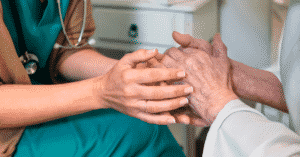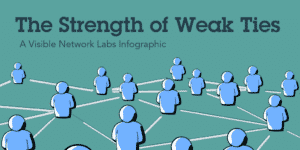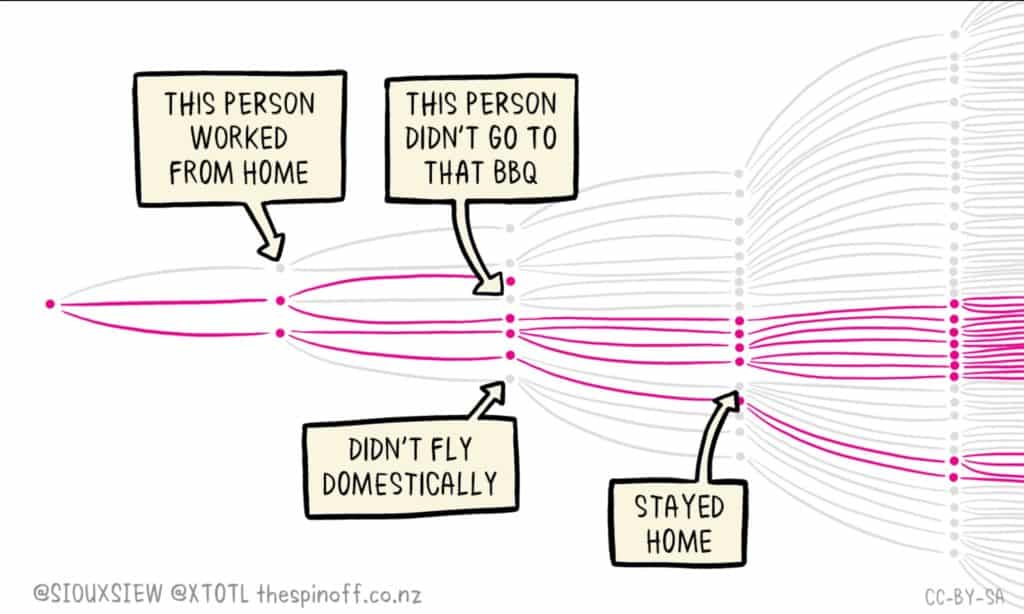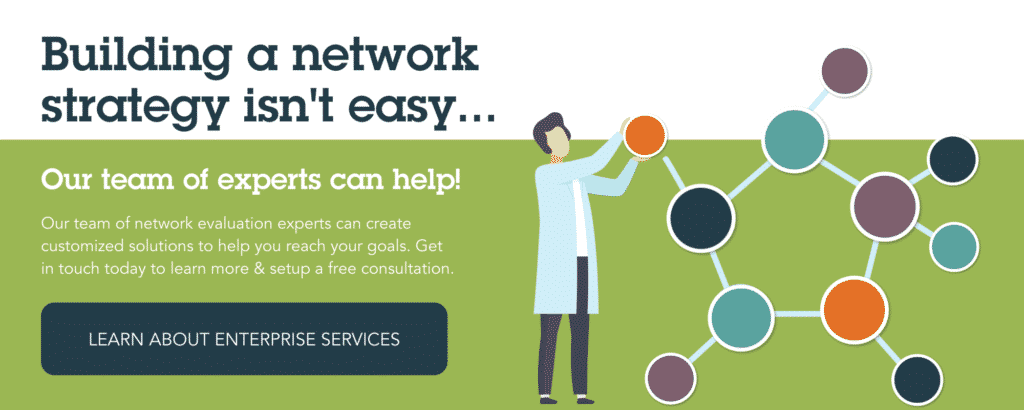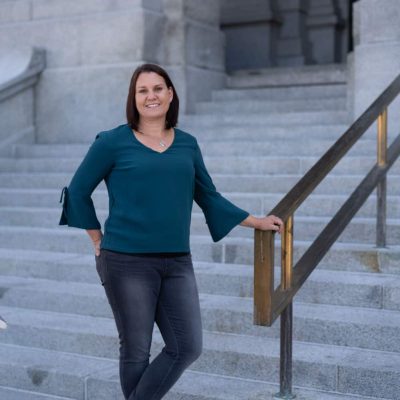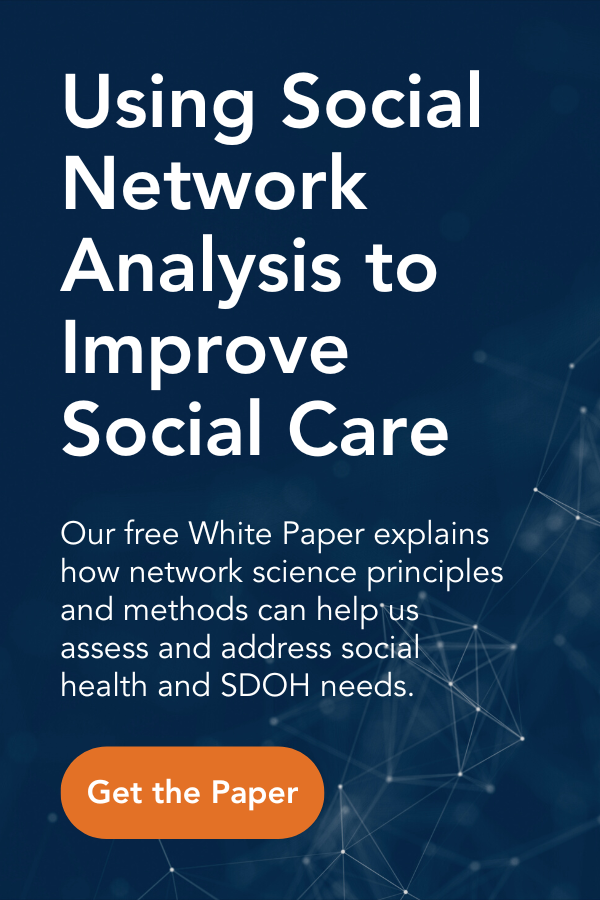Network Science and COVID-19: What’s the Connection?
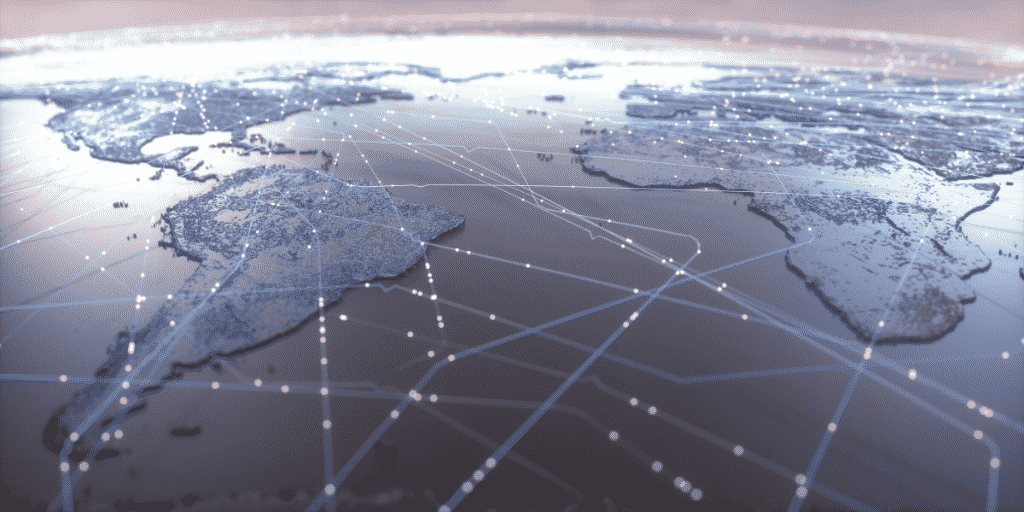
As the news from recent weeks about the worldwide spread of Covid-19 has hit us here at home, I continue to see the important role that network science plays in this pandemic. We may not all be infectious disease experts, but we are all network science experts in many ways. As we navigate the complexities of Covid-19, our minds are applying the principles of network science and systems thinking. We are in fact, all applying network science in almost every aspect of how we are dealing with and navigating this complex new life we are living. Who is connecting to whom? Where are the hubs of activity and how might the virus spread in those central areas of a network? Where are the connectors who transmit between subgroups?

Like you, I am also enamored by the simulations that show how the virus is spreading and how different contact patterns affect the spread. Like this brilliant one from the Washington Post on how outbreaks spread exponentially or this New York Time simulation showing how the virus got out of China, or this simple yet dynamic gif from The Spinoff in New Zealand (below). We are all using “flatten the curve” as easily as we learned “click it or ticket” and “back to sleep” when those public health campaigns were trending. What might be new to most people is the idea that there is a science behind all of this called network science. Network science is the study of how things are connected, and the impact of those connections on different outcomes. In this case, how a contact network spreads a disease across the world. As we all watch these simulations and think about whether the people around us might have the virus and if we get too close to them whether it will get transmitted to us or others, we are essentially, thinking like a network scientist. This science is so intuitive, and so important in times of crisis like this. Luckily, it is not a difficult one to truly grasp, making it a hopeful science also. That is, if we can all sharpen up on our network science skills, we can use that understanding to work collectively to stop the spread.
How Network Science Relates to Pandemics.
The study of networks has captured the eye of people in unique ways for decades. Like how trees use them to collaborate, or social networks and happiness. In our personal lives, we might be constantly tracking who we are in close contact with, who we have touched, and who we might interact with today.
And, it has always been an important lens by which to track contact networks. However, it’s also key for understanding how organizational systems are activated for response. Governments, health systems, and relief organizations can use Social Network Analysis, coupled with a network science lens to track who is working with whom, resources exchanged, and who is getting treated by whom. Who was told what when, and how did the chain of command get activated for response?
There is no more relevant time than now to consider how network science plays a role in these events. The power of networks is profound, both today, in the coming weeks, and in the future and how we think about the impact of how things today are all connected. There are a few network science that can help us think about what is happening today:
- How did we get here? We learned decades ago from the sociologist Mark Granovetter about how the the strength of weak ties has great advantages when we connect to one another in expansive and diverse ways. That theory has been foundational in the growing of systems, and it has motivated us physically, mentally, and economically to seek out connection. It is not suprising that we find ourselves in a hype-connected world.
- What is happening now? Concepts of network diffusion and contagion explain the very thing we are all becoming quite expert in. Networks are a powerful way for something to expand exponentially, resulting in large-scale diffusion of a virus and rabid contagion. We are experiencing this now.
- So what can save us now? Measures to promote “stay home to save lives” is another way to implement yet another network science concept. The concept that is we can create as many intentional structural holes in our networks as possible, we will begin to reduce the redundancies that make the chances of spread so high without the strategy. By creating as many “holes” in the network as possible, we are essentially fragmenting the connectivity and in that way we can begin to limit transmission.
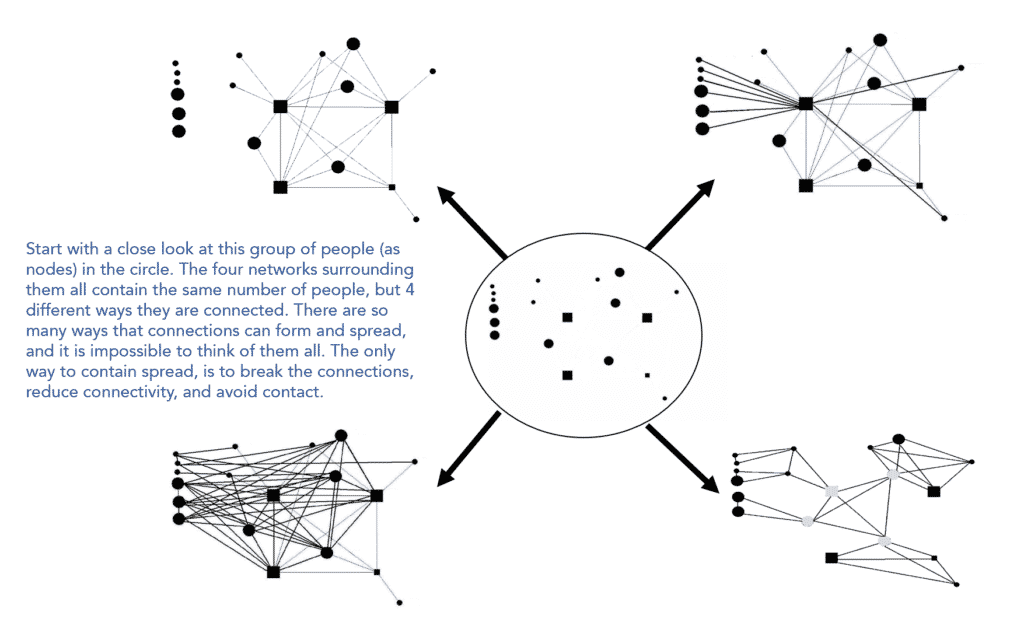
PARTNER as a Tool in Pandemics.
We can leverage these concepts and track data, allowing us to analyze and visualize these networks to inform our strategies. Network science applications can help us make sense of things, and to build strategies to leverage networks for good and in positive ways. Social network analysis (SNA), a statistical method that allows us to capture who is connected to whom, how those connections vary and change, and to identify patterns in those relationships is a well-known and often used method to study social connectedness. It uses a simple, relational data structure to capture the dyadic exchanges between two actors in the network to visually see where reach, spread, and diffusion is occurring. I have spent the better part of my career using SNA to research questions of how health systems prepare for disasters, how public health uses cross-sector interorganziational approaches to solve complex social problems, and all sort of other topics. And about 13 years ago, we built the PARTNER [Program to Analyze, Record, and Track Networks to Enhance Relationships] to put these very concept and methods into the hands of practitioners to use when they need to solve complex problems.
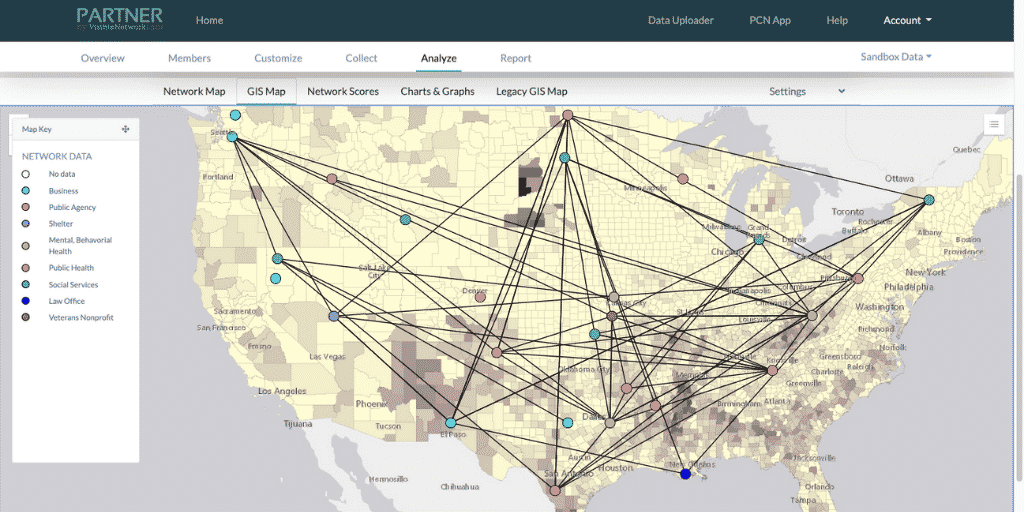
When we built the PARTNER platform, it was informed by the field of public health and in several preparedness and pandemic use cases. Our platform supports contact tracing, response coordination, and referral networks. In a few quick steps you can set up a data collection portal, start importing or collecting data, store all your data in one place, and access live visual maps, coupled with rich analytics to detect spread and track connections.
How it Works
To illustrate how PARTNER is used in a pandemic, we outline the use case of Contact Tracing in Pandemic Surveillance.
“Healthcare workers deduce potential disease pathways and propose corresponding containment strategies from collecting and reviewing patients’ contact history. Social Network Analysis (SNA) provides healthcare workers with a network approach for integrating and analyzing all collected contact records via a simple network graph, called a contact network” [1]. Through SNA and application of Network Science, we can identify prominent individuals in disease pathways as well as study the dynamics of disease transmission.
SOLUTION. Screen for contact networks, store all data in one data platform, real time contact network analysis data tracking and mapping: PARTNER is an evidence-based data tracking, geomapping, and network visualization tool for early detection, cluster analysis, pathway diffusion, and modeling to inform decision making, strategy, and to rapidly identify contact networks. PARTNER platform is ready to serve as a simple way for a providers or patient to collect, store, and immediately analyze contact networks.
PARTNER can also be used to track interagency coordination, resource coordination, and patient referrals. The data entry questionnaire can be customized for various case uses.
HOW IT WORKS. Steps include: 1) patient/providers enters a contact list using a simple web-based link, 2) data are automatically updated in real time network maps and analytics, 3) analysts, providers, policymakers access data dashboard for updated real-time data across a geographic location.
Data are stored on a secure Google cloud server. Maps are optimized for speed and big data. The Platform is customized for specific use cases to provide additional security and speed optimization.
[1] https://link.springer.com/chapter/10.1007/978-1-4419-6892-0_15

We Stand Ready to Help However Possible.
As national SNA and Network Science experts, with a rigorous data tracking and visualization tool, VNL stands ready to help. We are actively developing partnerships with public health, health systems, government, and the social sector to customize PARTNER as a solution. If you want to join us on this journey sign up today for the May 18 Network Innovation Summit where we will discuss the future of networks, with a focus on Networks in Times of Crisis. And if you just want to learn more about network science, we have great resources available at Visible Network Labs for you to dig in to learn more, and an entire data platform to track these kinds of relationships.
About the Author: Dr. Danielle Varda
CEO, Founder, Professor, & Mother of Three Spirited Girls
Danielle is a scientist turned start-up founder, leading Visible Network Labs as CEO. Her combination of 20 years as a network scientist studying social connectedness and health, published author, 12 years as a tenured professor at the University of CO Denver, and her successful launch and scaling of the Center on Network Science came together in one big idea to start VNL. She is an entrepreneur, technologist, network scientist, fundraiser, and mother to three spirited girls. Her calling came when she realized her unique ability to develop technology solutions bridge complex systems science with everyday applications in communities, organizations, and business. She is a nationally known expert and keynote speaker on applied network science, with specific expertise in health system, public health system, entrepreneurial ecosystems, and educational system approaches. Danielle has published over 30 peer-reviewed articles on networks and their impact on health, well-being, and economic outcomes. Danielle leads VNL’s strategic partnership approach, is the company’s lead fundraiser, and has a vision for how to utilize network science to solve our most pressing and intractable problems.
In addition to her leading VNL, she is also an Associate Professor at the School of Public Affairs, University of Colorado Denver where she is Co-Director of the Center on Network Science, Director of the Nonprofit Concentration in the MPA program, and Advisor to the Dual MPA-MPH Degree. Additionally, she holds a secondary appointment in the Colorado School of Public Health, Department of Health Systems, Management, and Policy. She also has a courtesy Associate Professor appointment in the School of Information Sciences at the University of CO Boulder.
|
|
Thank you for Signing Up |

More Social Care Resources
